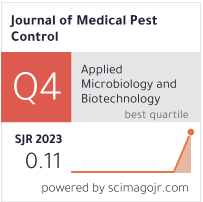Application of the optimal regression subset on the risk classification of epidemic focus of Meriones unguiculatus plague
Abstract
Abstract
Background: The risk classification of epidemic foci of Meriones unguiculatus (Mongolian gerbil) plague is essential for effective surveillance and control measures. This study explores the application of the optimal regression subset method to improve risk classification accuracy of plague foci.
Methods: Epidemiological and environmental data from plague-endemic regions were collected, including gerbil density, flea index, vegetation type, climate variables, and historical plague occurrence. The optimal subset regression technique was employed to select the most significant predictors of plague risk and to construct a risk classification model. The model’s performance was evaluated using goodness-of-fit metrics and classification accuracy.
Results: The optimal regression subset identified a parsimonious set of key variables that explained the majority of the variance in plague risk levels. The model achieved high predictive accuracy in distinguishing between high-, medium-, and low-risk foci, outperforming traditional full-variable models.
Conclusion: The optimal subset regression method provides an efficient and reliable approach to classify the risk of Meriones unguiculatus plague foci. This approach can aid public health authorities in prioritizing resources and implementing targeted interventions in high-risk areas.
Keywords: plague, Meriones unguiculatus, risk classification, optimal subset regression, epidemiology, surveillance
Full text:
PDFReferences
Bai X., Zhou S., Yan D., Niu Y., Cui Y., Chen Y., Du G.



